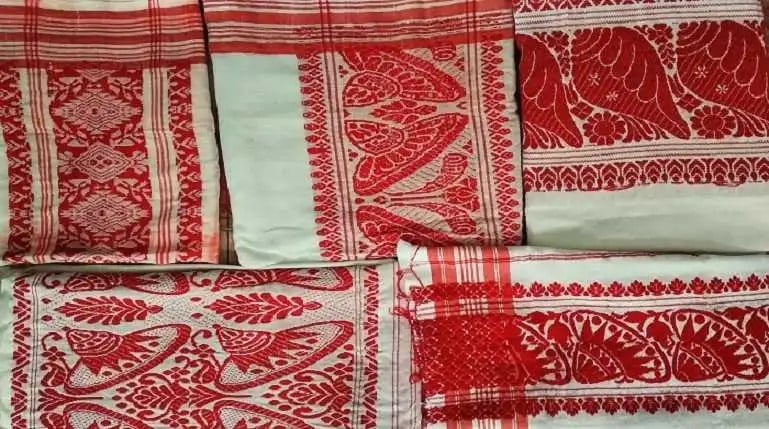About Assamese gamosa
- The ‘gamosa or gamocha’ is a hand-woven rectangular cotton piece of cloth with red borders and different designs and motifs.
- It is traditionally offered to elders and guests as a mark of respect and honour by Assamese people.
- It is an integral part of all socio-religious ceremonies in the state and is considered an Assamese identity and pride.
- For specific purposes, it is also made of expensive materials like traditional Assamese ‘Pat’ silk and in different colours as well.
- The ‘gamosa’ meant for exchange during the ‘Bihu’ festival is known as ‘Bihuwan’.
- It is a unique scarf found only in Assam and also received Geographic Indication (GI) tag.
What is a Geographic Indication Tag?
- A Geographical Indication is a sign used on products that have a specific geographical origin and possess qualities or a reputation that are due to that origin.
- This tag is typically used for agricultural products, foodstuffs, wine and spirit drinks, handicrafts and industrial products.
- The Geographical Indications of Goods (Registration and Protection) Act, 1999 seeks to provide for the registration and better protection of geographical indications relating to goods in India.
- This GI tag is valid for 10 years following which it can be renewed.
Q1) What is Assamese Bihu?
Assamese Bihu is one of the most important cultural festivals of Assam, which celebrates the change in seasons. It mainly caters to the agrarian culture and society of the state and marks the beginning of the Assamese New Year and harvest season.
Source: How a ‘hybrid’ gamosa sparked protests across Assam
Last updated on June, 2025
→ UPSC Notification 2025 was released on 22nd January 2025.
→ UPSC Prelims Result 2025 is out now for the CSE held on 25 May 2025.
→ UPSC Prelims Question Paper 2025 and Unofficial Prelims Answer Key 2025 are available now.
→ UPSC Calendar 2026 is released on 15th May, 2025.
→ The UPSC Vacancy 2025 were released 1129, out of which 979 were for UPSC CSE and remaining 150 are for UPSC IFoS.
→ UPSC Mains 2025 will be conducted on 22nd August 2025.
→ UPSC Prelims 2026 will be conducted on 24th May, 2026 & UPSC Mains 2026 will be conducted on 21st August 2026.
→ The UPSC Selection Process is of 3 stages-Prelims, Mains and Interview.
→ UPSC Result 2024 is released with latest UPSC Marksheet 2024. Check Now!
→ UPSC Toppers List 2024 is released now. Shakti Dubey is UPSC AIR 1 2024 Topper.
→ Also check Best IAS Coaching in Delhi
























